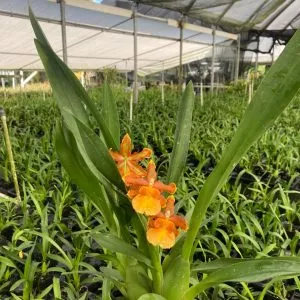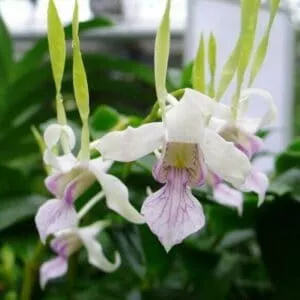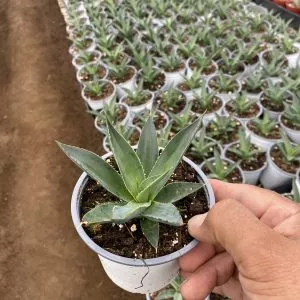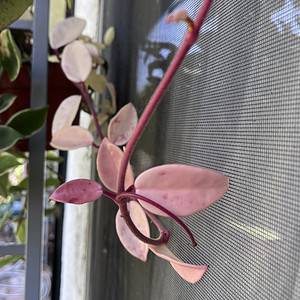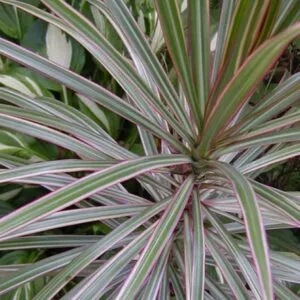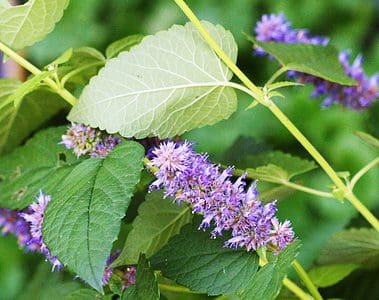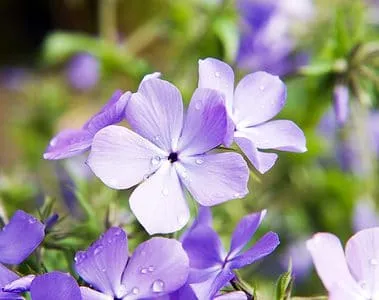No products in the cart.
Strawberries are one of the most beloved fruits all around the world. They’re sweet and juicy and contain vitamin C, fiber, and antioxidants.
To grow strawberries can be a fun and rewarding experience, providing fresh, delicious fruit throughout the season. Yet, successfully growing strawberries requires knowledge and effort to produce a big crop.
In this guide, I’ll take you through everything you need to know about how to grow strawberries 🍓, from planting strawberries to harvesting, and answer some questions that come to mind.
So, whether you’re a beginner or an experienced gardener, let’s start growing strawberries!
Hot Tip: Did you know you can also grow your strawberries hydroponically at home?
What are Strawberry Plants

Strawberry plants are herbaceous perennials that produce fruit in juicy, bright red berries of color, which we all know and love. 😋
The strawberry plant belongs to the Rosaceae family and is native to temperate regions of the world. The plant grows from a crown and has a shallow root system, making it easy to grow in containers or garden beds.
Strawberries produce white or pink flowers in the spring, eventually becoming the familiar strawberry fruit. The fruit is rich in vitamin C, fiber, and other nutrients, making it a healthy addition to any diet. So, you can enjoy flavorful berries filled with a healthy boost of vitamins.
There are several different varieties of strawberry plants, ranging in size, flavor, and seasonality. Some popular varieties include:
June-bearing strawberries
Ever-bearing strawberries
Day-neutral strawberries.
In addition to being a delicious and healthy treat, strawberry plants have several potential medicinal uses. Some studies suggest that the fruit may help reduce inflammation, improve heart health, and even have cancer-fighting properties.
Strawberry plants are a versatile and rewarding addition to any garden or container. With care and attention, anyone can enjoy this beloved fruit’s sweet taste and health benefits. So, get started on your strawberry bed to enjoy the June-bearing varieties or other strawberries available.
Soon, you will be harvesting your strawberries to enjoy at home.
The Strawberry Life Cycle
The strawberry life cycle begins with germination. Strawberry seeds are tiny and embedded on the surface of the fruit. To initiate germination, the seeds need moisture and warmth. Once the seeds sprout, seedlings are usually transplanted into prepared soil.
This stage marks the beginning of the plant’s life as it takes root in its designated spot. As the strawberry plants establish themselves, they enter a vigorous growth phase. The plant produces leaves, stems, and a network of runner plants.
Runners are shoots that spread horizontally and eventually develop into new plants, aiding mother plants in the plant’s natural propagation. The plant allocates energy to developing a robust root system and foliage during the plant growth stage. Hence, you have the mother plants with the daugh
ter plants.
The next critical stage in the strawberry life cycle is forming flower buds. Once the plant has matured, it produces clusters of small strawberry flowers. These flower buds contain both male and female parts, facilitating self-pollination.
Bees and other pollinators also play a crucial role in fertilizing the flowers forming the fruit. After successful pollination, the fertilized flowers transform into green, unripe strawberries. Over time, these berries change color, turning from green to white, and finally, as the berries ripen, they turn to a vibrant red hue.
This period marks the culmination of the plant’s efforts as it produces the edible ripening fruit that we commonly associate with strawberries. Once the strawberry plants reach their peak ripeness, it’s time to harvest the delicious berries.
This marks the end of the fruit-bearing phase of the plant’s life cycle. After harvesting, strawberry plants may enter a period of dormancy, leaving you with dormant plants during colder seasons.
During dormancy, the plant conserves energy, and its growth slows until conditions become favorable again for renewed growth and fruit production.
The strawberry life cycle is cyclical, with the potential for the plant to produce multiple harvests under favorable conditions.
As the plant completes its life cycle, it often leaves behind runners that can take root and grow into new plants, perpetuating the strawberry’s life cycle.
Quick Guide to Growing Strawberries
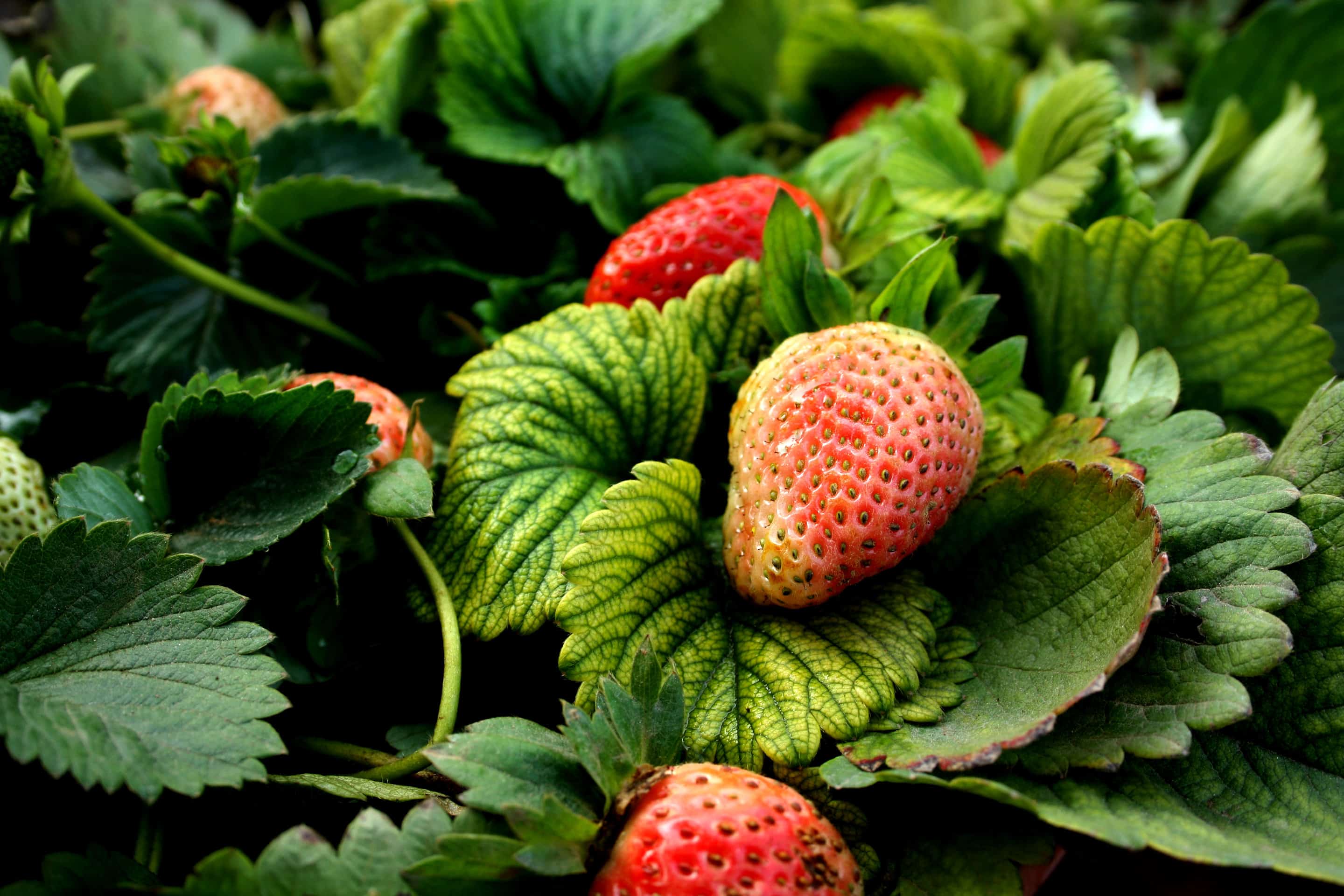
If you are strapped for time ⌚ and do not want to read the full article, I recommend following these growing strawberries tips:
Choose the Right Variety: Opt for June-bearing varieties for a single large harvest in late spring. Everbearing types produce smaller harvests throughout the season. In contrast, day-neutral plants have fruit multiple times a year.
Select a Sunny Location for Baby Plants: Plant strawberries in a planting site that receives at least 6-8 hours of sunlight daily. The same applies to potted plants. A tip is to place them in hanging baskets.
Ensure well-draining soil to prevent soggy roots.
Planting: Set your bare root strawberries 12-18 inches apart in rows, with 2-3 feet between rows. Plant with the crown at soil level, and water thoroughly after planting.
Watering: Keep the soil consistently moist but not waterlogged. Water at the base to prevent foliage diseases; avoid wetting the leaves.
Mulching: Apply a layer of straw or mulch around strawberry beds to suppress weeds and retain moisture. Mulching also helps prevent berries from touching the soil, reducing the risk of rot.
Fertilization: Use a balanced, slow-release fertilizer when planting—side-dress with fertilizer in spring and mid-summer for continued growth.
Pruning: Remove runners (long shoots) to encourage larger fruit production. Trim older leaves to improve air circulation and reduce disease risk.
Pests and Diseases: Inspect plants regularly for pests like aphids or mites. Treat fungal diseases promptly with appropriate fungicides.
Harvesting: Harvest strawberries when fully ripe, with a vibrant red color. Gently pick the berries with the stem intact to avoid bruising.
When to Plant Strawberries
Planting times for strawberries can vary based on your USDA hardiness zone. Different types of strawberries, including June-bearing, day-neutral, and everbearing varieties, may have slightly different recommendations. Here’s a general guideline based on USDA zones:
June-Bearing Strawberries:
Northern Zones (Zone 3-6): Plant in early spring as soon as the soil can be worked. This is typically in April or May.
Central Zones (Zone 7-8): Plant early to mid-spring, around March or April.
Southern Zones (Zone 9-10): Plant in late fall to early winter (October to December) or in late winter to early spring (January to February).
Day-Neutral Varieties:
Northern Zones (Zone 3-6): Plant in early spring or late summer. Late summer planting can provide a fall harvest.
Central Zones (Zone 7-8): Plant in spring or late summer for a fall harvest.
Southern Zones (Zone 9-10): Plant for winter or early spring harvest in the fall. Alternatively, plant in late winter or spring for a harvest of late spring to early summer.
Everbearing Strawberries:
Northern Zones (Zone 3-6): Plant in spring for a summer and fall harvest.
Central Zones (Zone 7-8): Plant in spring for a summer and fall harvest.
Southern Zones (Zone 9-10): Plant in late fall for winter or early spring harvest. Alternatively, plant in late winter or spring for a harvest of late spring to early summer.
In stock In stock In stock In stock
Free Shipping
$39.99
Sold By:
Aloha Hawaii Orchids
$44.99Oncidium Catatante Fragrant Orchid ‘Pacific Sunspots’
Rated 4.65 out of 5 based on 268 customer ratings01
Sold By:
Aloha Hawaii Orchids
Free Shipping
$39.99
Sold By:
Aloha Hawaii Orchids
$44.99Orchid Dendrobium Antennatum live plants Antelope New Guinea Spikes | Fragrant Scent From Hawaii
Only 3 available and it’s in 1 people’s basket Rated 4.65 out of 5 based on 268 customer ratings00
Sold By:
Aloha Hawaii Orchids
$18.99
Sold By:
Cacti and Exotica
Agave blue glow
Rated 4.98 out of 5 based on 59 customer ratings00
Sold By:
Cacti and Exotica
$15.99
Sold By:
BubbleBlooms
Satin Pothos, Silver Vine, Silver Cloud, Silk Pothos Silver Philodendron in a 4 inch pot, very filled
Only 96 available and it’s in 1 people’s basket Rated 4.81 out of 5 based on 279 customer ratings01
Sold By:
BubbleBlooms
Additional Tips:
Keep soil moist and well-draining, rich in organic matter.
Space plants according to the specific recommendations for the variety you are planting.
Mulch around the plants to help retain moisture and control weeds.
Water consistently, especially during dry periods, and remove weeds as they come up.
It’s essential to check the specific recommendations for the varieties you choose, as there can be some variation in optimal planting times based on local climate conditions and the specific characteristics of the strawberry cultivars.
Strawberry Plants Care and Growing Guide

PLANT NAME: Fragaria × ananassa
Other Name: strawberry
Plant Type: herbaceous perennial
Native Areas: North and South America
Light Requirement: full sun
Watering: Adequate watering
Fertilizer: Organic fertilizer
Toxicity: Non-toxic
Temperature: Cold temperature
Propagation: seeds, rhizomes, division
Soil Type: well-drained, rich in organic soil
USDA Hardiness Zones: 5 through 8
Great, now that we have covered the essential information on growing strawberries, let’s look at everything more thoroughly.
Soil and Water
Creating the optimal soil environment is fundamental for successful strawberry cultivation. Begin by selecting well-drained soil to avoid waterlogging, a condition detrimental to strawberry plants as it can lead to root rot.
Ideally, choose soil types with a sandy loam or loamy texture. Adjusting the pH level is crucial; the strawberry plant thrives in slightly acidic to neutral soils ranging from 5.5 to 6.5. Utilize lime or sulfur as needed to fine-tune soil acidity.
Enrich the soil with organic matter, such as compost, to enhance fertility and improve water retention. Adding this addition to clay soil provides essential nutrients and contributes to a healthy soil structure, supporting robust root development.
Consider raised beds, particularly in areas with heavy clay soils, to ensure proper soil aeration. The water regimen for strawberry plants is equally important to their well-being. Maintaining consistent soil moisture during the growing season is essential.
Regular irrigation, especially during dry spells, is necessary to prevent dehydration. Drip irrigation is recommended, delivering water directly to the base of plants and minimizing the risk of fungal diseases by keeping foliage dry.
Timing matters – watering in the morning allows excess moisture on foliage to evaporate during the day, reducing the likelihood of issues like powdery mildew. Mulching is a valuable practice, helping conserve soil moisture and suppress weeds, which compete for water resources.
Overhead watering should be minimized to prevent fungal diseases, as wet foliage overnight can lead to problems like gray mold. Adequate water supply during fruit development is crucial for producing plump, juicy berries; inconsistent watering during this stage may result in smaller or deformed berries.
Another crucial thing is removing weeds to prevent water and nutrition competition with your young strawberry plants.
Light
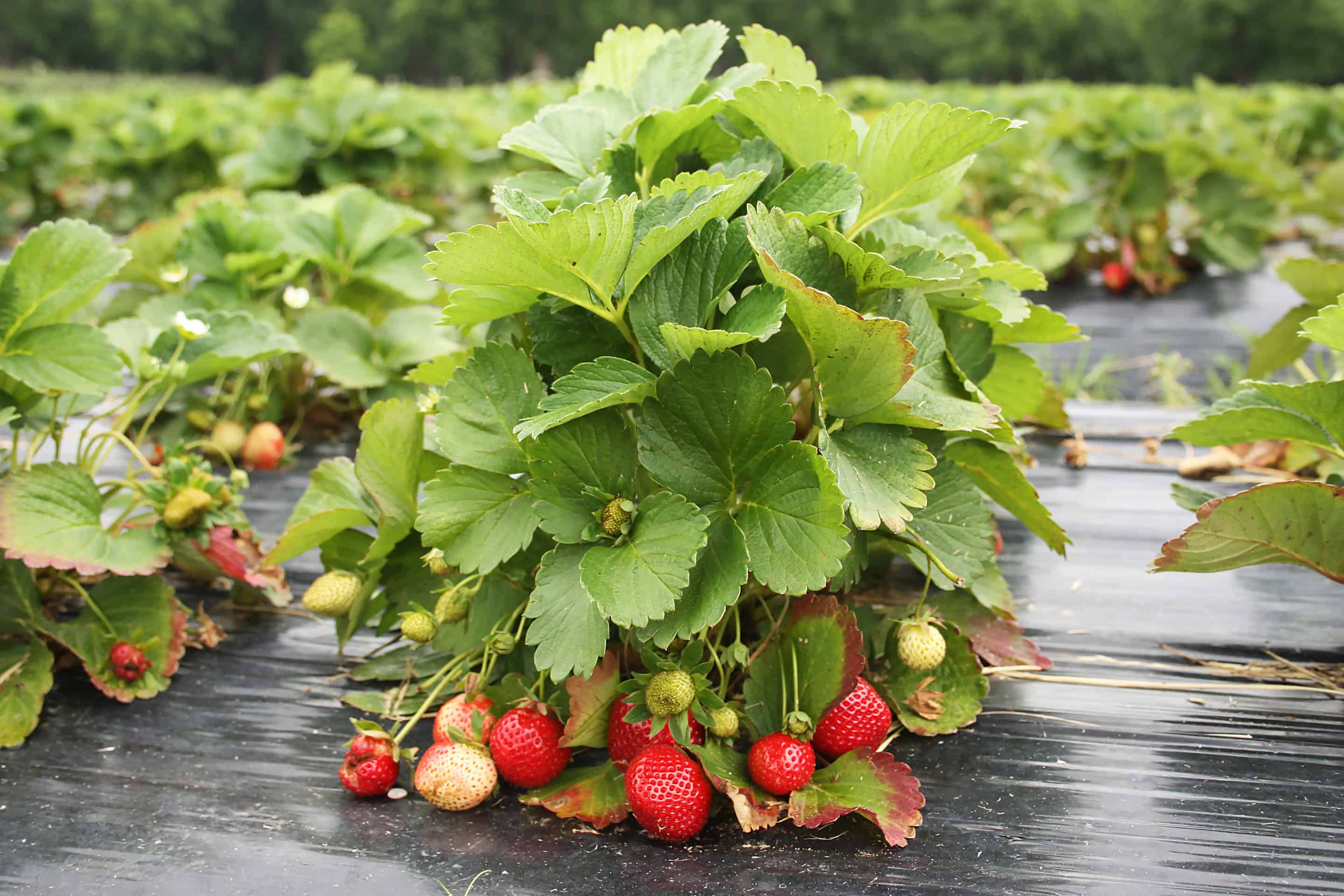
Ensuring proper lighting conditions is a critical factor in the successful growth of strawberry plants. When growing strawberries, they thrive in full sun, requiring a minimum of 6 to 8 hours of direct sunlight daily. An appropriate location with ample sunlight is crucial for plant health and fruit production.
Natural Sunlight Requirements:
Strawberries are photoperiodic, meaning their growth and flowering are influenced by the duration of daylight. Adequate sunlight exposure promotes robust flowering and fruiting.
In regions with cooler climates, placing strawberry plants in areas that receive morning sunlight can help prevent issues associated with prolonged leaf wetness and fungal diseases.
Container Gardening Considerations:
For those cultivating strawberries in containers, choosing a sunny spot or moving containers to follow the sun throughout the day is essential.
This ensures that the plants receive sufficient sunlight for optimal growth.
Container gardening allows for greater flexibility in light exposure, making it an excellent option for urban or limited-space environments.
Artificial Lighting in Limited Sunlight Areas:
Supplemental artificial lighting can be considered in regions with limited natural sunlight. High-quality LED grow lights with a spectrum resembling natural sunlight can provide the necessary light for strawberry plants. This becomes particularly relevant during winter or in areas with prolonged cloudy weather.
Protection from Intense Heat:
While strawberries grow and require ample sunlight, protection from intense heat is also crucial. In hotter climates, providing afternoon shade or using shade cloth during extreme heat can prevent plant stress and help maintain fruit quality.
Monitoring Light Conditions:
Regularly monitor the light conditions in your strawberry garden, especially if there are changes in the surrounding environment, such as the growth of nearby trees or structures that might cast shadows. Being attentive to these factors ensures that your strawberry plants receive the optimal sunlight for a bountiful harvest.
Temperature and Humidity
Maintaining the correct temperature is crucial for strawberry plants’ overall health and productivity.
Growing strawberries, they thrive in cool to mild temperatures—ideal daytime temperatures for strawberry cultivation range between 60°F to 80°F (15°C to 27°C).
Nighttime temperatures should not drop below 40°F (4°C), as colder conditions can affect flowering and fruiting.
Chilling Requirements:
Many strawberry varieties have chilling requirements, meaning they need a certain number of cold hours during winter to produce a healthy crop. This chilling period, typically between 200 to 1,000 hours below 45°F (7°C), is necessary for breaking dormancy and promoting flowering.
Heat Tolerance and Protection:
While strawberries prefer cooler temperatures, they can tolerate some heat. Yet, prolonged exposure to high temperatures, significantly above 85°F (29°C), can stress the plants. Providing shade during intense heat or hot spells can protect the plants and prevent heat-related issues.
Humidity Considerations:
Strawberries generally prefer moderate humidity levels. High humidity, especially with warm temperatures, can create conditions conducive to fungal diseases. Good air circulation, achieved through proper spacing and pruning, helps reduce humidity around the plants, minimizing the risk of diseases like gray mold.
Winter Protection in Cold Climates:
In colder climates, winter protection is essential. Mulching around the plants with straw or other insulating materials helps regulate soil temperature, preventing extreme fluctuations that could damage the roots. Covering plants with frost blankets during sudden cold snaps provides added protection.
Monitoring and Adjusting:
Regularly monitor temperature and humidity levels in your strawberry growing area. Consider using thermometers and hygrometers to gauge these conditions accurately.
If necessary, implement shade structures, mulching, or adjusting planting locations to create an environment that optimally suits strawberries’ temperature and humidity preferences.
Fertilizer

Most plants need nutrition; the same applies to the new strawberry plants and varieties. Here are some guidelines:
Balanced Fertilizer Composition: Choose a balanced fertilizer with equal or near-equal ratios of nitrogen (N), phosphorus (P), and potassium (K). For example, a 10-10-10 or 14-14-14 fertilizer is suitable for strawberries.
Timing of Fertilization: Apply fertilizer in spring as the plants emerge. After fruiting starts, another application in late spring or early summer can provide additional nutrients.
Slow-Release Fertilizer: Consider using a slow-release fertilizer for strawberries. This ensures a steady and gradual release of nutrients over an extended period, promoting sustained growth.
Organic Fertilizers: Organic options like well-rotted compost or aged manure can be beneficial. These provide essential nutrients and improve soil structure and microbial activity.
Side-Dressing Technique: Adopt the side-dressing technique by applying fertilizer in a band along the side of the row, avoiding direct contact with the plants. This minimizes the risk of burning the roots.
Nitrogen for Foliage and Growth: Nitrogen is crucial for foliage development. Adequate nitrogen promotes healthy leaves and runners. Yet, excessive nitrogen can delay fruiting, so balance is vital.
Phosphorus for Flowering and Fruiting: Phosphorus is essential for flower and fruit development. A phosphorus-rich fertilizer helps form robust blossoms and enhances fruit quality.
Potassium for Overall Plant Health: Potassium contributes to overall plant health and helps build disease resistance. It plays a role in fruit development and improves the plant’s ability to withstand stress.
Micronutrients: Ensure the presence of micronutrients like iron, magnesium, and manganese. These are vital for various physiological processes in strawberry plants.
Soil Testing: Conduct regular soil tests to determine the specific nutrient needs of your strawberry patch. Adjust fertilizer applications based on the results to provide targeted nutrients.
Watering After Fertilization: Water the plants thoroughly after applying fertilizer. This helps to dissolve the nutrients and facilitates their absorption by the roots.
Pruning Strawberries
Pruning is a crucial practice for maintaining the health and productivity of strawberry plants. Here’s a detailed guide:
Runner Removal: Regularly remove excess runners to channel the plant’s energy into fruit production. This encourages the development of larger and more abundant berries.
Leaf Pruning: Trim older or excessive leaf growth to improve air circulation, reducing the risk of diseases like gray mold. Focus on removing leaves that show signs of yellowing or fungal diseases.
Flower Removal: Pinch off the first blossoms in the planting year to divert energy into establishing a solid root system. This results in a more robust harvest in subsequent years.
Renovation Pruning:
After the final harvest, prune the entire strawberry patch by mowing it if strawberry beds are grown. This stimulates new growth and helps rejuvenate the plants.
Potting and Repotting Strawberries
Proper potting and repotting are essential for container-grown strawberries. Select a well-draining container with sufficient depth for the strawberry roots. Consider using containers with drainage holes to prevent waterlogging.
Use a high-quality potting mix rich in organic material. This provides essential nutrients and promotes healthy root development. Replant and grow strawberries at the same depth as in their previous container or garden bed. Ensure the crown is at the soil level to prevent rot.
Repot strawberries every 2-3 years or when you notice a decline in plant vigor. Spring is an ideal time for repotting, allowing plants to establish in their new containers before the growing season.
When repotting, propagate strawberry plants by dividing them and planting overgrown strawberries into new beds.
Problems and Troubleshooting
Growing strawberries can be a rewarding experience, but like any plant, they can face various problems. Here are some common issues with strawberry plants and troubleshooting tips for each:
1. Disease Issues:
You can face Gray Mold (Botrytis cinerea) when you grow strawberries—symptoms: Grayish mold on berries, especially in wet conditions, leading to powdery mildew.
Resolving the problem helps to improve air circulation, avoid overhead watering, and remove infected berries promptly.
Another concern is leaf spot disease. The symptoms are dark spots on leaves. Planting and growing strawberries like disease-resistant varieties, ensuring good air circulation, and applying fungicides if needed help.
2. Pest Problems:
Aphids: Symptoms: Small, soft-bodied insects on the undersides of leaves. Troubleshooting: Use insecticidal soap or neem oil, encourage natural predators, and maintain a clean garden.
Slugs and Snails: Symptoms: Irregular holes in leaves and fruit. Troubleshooting: It helps to set up barriers, use slug traps, and keep the garden clean to reduce hiding spots.
3. Environmental Issues:
When you grow strawberries, frost damage is another concern; it causes browning or damage to the strawberry flowers or wet berries. It helps to cover your strawberry plant with a cloth during frost.
Lastly, heat stress can cause wilting and sunburn on the strawberry plants’ fruit. It helps to add a layer of organic material as mulch around the base and provides shade with enough watering.
4. Soil and Nutrient Problems:
Poor Fruit Development: Symptoms: Small or misshapen fruit. Ensure proper pollination, maintain soil pH, and provide adequate nutrients through fertilization.
Yellowing Leaves (Nutrient Deficiency): Symptoms: Yellow leaves, especially between veins. Test soil for deficiencies and amend with appropriate fertilizers, such as a balanced fertilizer.
5. Weed Competition:
Weeds can reduce growth and yield as they compete for water and nutrition. Adding a layer of mulch around your strawberry plant will help suppress the weeds.
6. Watering Issues:
Root Rot: Wilting, yellowing, and stunted growth. Ensure well-draining soil, avoid overwatering, and improve soil aeration.
Dry Soil: Wilting, especially in hot weather. Water consistently, providing about 1-1.5 inches weekly, and use mulch to retain moisture.
Regularly monitoring your strawberry plants and prompt action when issues arise can help maintain a healthy and productive strawberry patch.
Additionally, choosing disease-resistant varieties, practicing good garden hygiene, and providing optimal growing conditions can prevent many common problems.
Harvesting and Storing Strawberries

Harvesting and storing strawberries properly is crucial to ensure that you enjoy fresh and flavorful berries.
Harvesting Strawberries:
Timing: Harvest strawberries when they reach their full color and are firm to the touch. For June-bearing varieties, the main harvest typically occurs in late spring to early summer. Day-neutral and everbearing varieties may produce fruit throughout the growing season.
Frequency: Pick ripe strawberries every 2 to 3 days to ensure you get them at their peak flavor.
Method: Gently lift the berries with the stem attached and avoid pulling or tugging, as this can damage the plant. Hold the berry near the stem, pin it off with your thumbnail, or use small pruning shears.
Avoid Overripe Berries: Harvest berries before they become overripe, as they are more prone to spoilage.
Storing Strawberries:

Immediate Use: If you use the strawberries immediately, store them at room temperature for up to a day to preserve their flavor.
Refrigeration: For more extended storage, refrigerate strawberries as soon as possible. Store unwashed strawberries in a single layer on a paper towel-lined tray or a shallow container. This helps prevent bruising and mold growth.
Removal of Stems: Keep the stems on the strawberries until ready to use them. Removing the stems before storage can lead to quicker spoilage.
Ventilation: Place the tray or container in the refrigerator’s crisper drawer, ensuring good ventilation to prevent moisture buildup.
Avoid Washing: Do not wash strawberries until ready to eat them, as moisture accelerates decay.
Freezing: If you have an abundance of strawberries, consider freezing them for later use. Wash, hull, or leave them whole or slice them before freezing.
Tips for Long-Term Storage:
Freezing: To freeze strawberries, spread them on a baking sheet and freeze them individually before transferring them to a sealed container or bag.
Jam or Preserves: Turn excess strawberries into jams or preserves for longer shelf life.
Dehydration: Dehydrate strawberries for a crunchy and sweet snack.
Signs of Freshness and Ripeness:
Look for plump, well-shaped berries with a vibrant color.
The berries should be firm and have a fresh, sweet aroma.
Avoid berries with soft spots, mold, or a dull appearance.
Following these tips, you can enjoy the best flavor and quality from your freshly harvested strawberries. Remember that strawberries are delicate, so handle them carefully to minimize bruising and maintain their freshness.
Frequently Asked Questions
The time it takes for a strawberry plant to produce fruit can vary depending on the type of strawberry, environmental conditions, and specific growing practices. Here are general timelines for different types of strawberries:
June-Bearing Strawberries: June-bearing strawberries typically take about 4 to 6 weeks from flowering to produce ripe fruit. After planting, it’s common to wait until the second year for a complete harvest. In the first year, it’s advisable to pinch off the flowers to encourage more vital root and runner development.
Day-Neutral Strawberries: Day-neutral strawberries can start producing fruit about 4 to 6 weeks after planting and continue to produce fruit throughout the growing season. Some varieties are known to have fruit earlier than others; timelines may vary.
Everbearing Strawberries: Everbearing strawberries, like day-neutral varieties, can produce fruit shortly after planting and continue to do so throughout the growing season. You can typically expect fruit within 4 to 6 weeks after flowering begins.
The best time to plant strawberries depends on the climate of your region. In general, it’s best to plant strawberries in the spring or late fall when the weather is cooler. This allows the plant to establish roots before the hot summer or winter frost sets in. In warmer climates, strawberries can be planted in the fall or winter to avoid the summer heat.
Yes, strawberries are generally considered to be easy to grow for beginners. They are hardy fruits that can thrive in various soil types and weather conditions.
Yet, it’s important to note that different varieties may have additional growing requirements, so it’s a good idea to research and choose the best variety for your specific location and climate.
With proper care and attention, you should be able to enjoy a bountiful harvest of delicious strawberries in no time!
Growing strawberries can be done in pots and ground, but some differences must be considered. In pots, strawberries can be easier to manage and can be moved around to find the best sun exposure.
Nevertheless, they may require more frequent watering and fertilizing. On the other hand, when grown in the ground, strawberries can spread out more and produce more fruit, but they require more space and maintenance.
Ultimately, it depends on your preferences and the resources you have available.
Yes, strawberries are a perennial plant, which means they can come back every year. Regardless, the plant may not produce as much fruit in subsequent years as in its first year of growth. It’s essential to properly care for the strawberry plantings by trimming it back and providing it with the proper water and nutrients to ensure healthy growth and a bountiful harvest.
Yes, strawberry plants tend to spread by producing runners or stolons. These runners grow out from the mother plant and develop new plantlets, which can then be transplanted to other locations in the garden.
This spreading process can help to create a dense and productive strawberry patch. Yet, keeping the runners under control is essential, as they can sometimes become invasive and take over other garden areas.
Whether you want to buy, sell, or reach out to other plant enthusiasts, Plantly is the right place to be!
-
$35.99Sold By: Succulent Oasis
In stock
Medium Succulent Arrangement in a Polka Dot Pail Planter. Beautiful, completely assembled dish garden.
Only 14 available and it’s in 1 people’s basketRated 4.84 out of 5 based on 352 customer ratings01Sold By: Succulent Oasis -
-
$10.00Sold By: That Wild Yard
In stock
Hoya Carnosa ‘Tricolor’ aka Krimson Queen
Only 1 available and it’s in 1 people’s basketSold By: That Wild Yard -
Free Shipping$22.99Sold By: Gar-Zen Botanical Design
In stock (can be backordered)
Dracaena Tri Color Dragon Tree
Rated 4.86 out of 5 based on 49 customer ratings01Sold By: Gar-Zen Botanical Design
